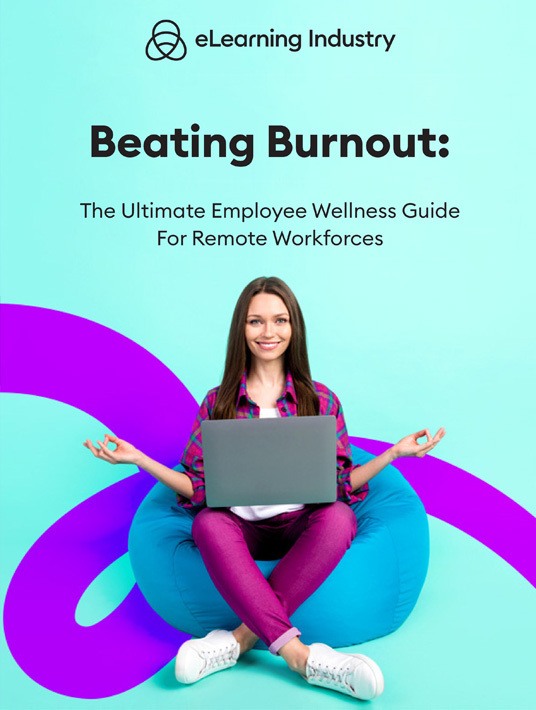Mental Health Awareness Month: How Does A Poor Work-Life Balance Affect Employees?
Although major health organizations have been talking about mental health for many decades now, it has really taken center stage in recent years. And since May is the Mental Health Awareness Month, we take the opportunity to talk about work-life balance, an issue that plays a major role in people’s mental health.
Nowadays, with the rise of electronics and remote work, it’s becoming increasingly difficult for employees to separate their professional from their personal lives. In fact, they often find that the scale usually tips towards work. As a result, they are left with minimal energy to spend time with their loved ones and take the time they need for themselves. Ultimately, they end up feeling burned out and unsatisfied with their lives. But how can we turn this situation around? In this article, we share tips that employers and employees can use to create a work environment that promotes taking care of your physical and mental health and encourages a healthy work-life balance.
How Can Employers Support The Mental Health Of Their Employees?
Employers can significantly affect the work-life balance of their employees. They are the ones who can motivate and empower them to make the necessary changes to improve their lives. Let’s see 5 ways they can make that happen.
1. Ask Employees What They Need
A good place to start when building mental health awareness is understanding the needs of your employees. How can you help them improve their work-life balance if you don’t know how it affects their life? Therefore, it’s always a good idea to hold regular meetings in which you gather feedback on whether your employees are feeling overworked, the stresses they deal with daily, and any recommendations they have that would increase job satisfaction. Remaining in touch with your employees gives them the time and support they need while giving you the opportunity to come up with actionable measures that help them be more productive and motivated.
2. Offer Flexibility
Rigidness and excessive control in the workplace are often what cause employees to suffer the consequences of burnout. It’s understandable that you want to be on top of processes to ensure that tasks are completed successfully. But, at the same time, it’s important that employees can work independently without being micromanaged. This means allowing employees to manage their time and even embracing flexible work hours. If the usual 9–5 is too draining for your staff, ask them if an asynchronous schedule or short weeks might boost their productivity. Don’t forget to offer employees training and development opportunities, and even allot some time that they can use to pursue their passion projects.
3. Encourage Breaks And PTO
When the workload becomes overwhelming, your employees must be able to step away from their office to clear their heads. Seeing as many employees avoid taking breaks for fear of looking like they’re slacking off, it’s your job to encourage them to do so. Recommend a coffee break or a walk around the building to help them relax and return to work with a fresh mind. The same goes for time off work. If you’re noticing that many of your employees have PTO days racked up, you should encourage them to take them to unwind and spend quality time with their family and friends. Make sure that you have given them the tools to prepare beforehand so that they don’t have to squeeze in work or check emails during their time away.
4. Offer Wellness Perks
Up to this point, we have talked about things you can do to support your employees in the workplace. But there are some perks you can offer them that they can enjoy outside of business hours. Firstly, a mental health resources library can help raise mental health awareness among your workforce so that they can recognize burnout symptoms themselves. In addition, you can offer a counseling support benefit that covers mental health professionals. Other wellness perks that benefit employee productivity and satisfaction are gym memberships, health insurance programs, or home office stipends.
5. Lead By Example
Change starts from the top. If you don’t follow your own advice, how can you expect your employees to do it? By educating yourself and your management team on issues regarding mental health, you’ll start to notice a change in your employees as well. Leave work on time, take breaks throughout the day, and go on vacation when you need to. But most importantly, respect boundaries and don’t try to overwork your employees or communicate with them outside of work hours. This way, employees will feel empowered to put their mental health first and improve their work-life balance.

4 Tips To Strike A Healthy Work-Life Balance For Employees
Now, let’s see what employees can do to take control of their lives and mental health. Here are 4 tips to help you create an everyday routine that makes you feel happy and fulfilled.
1. Take Control Of Your Time
A good first step to achieving balance in the workplace is knowing your priorities. Start by setting goals for your day or week and formulating a plan to help you achieve them. Then, observe how much time each task takes up and organize your time to achieve maximum productivity. Eliminate unimportant tasks that waste your time and prioritize the essentials. There are only so many hours in the day, so you need to be careful about where you’re devoting them. In addition, thoroughly organizing your time allows you to always stay on top of your workload and be more prepared when urgent tasks arise.
2. Establish Boundaries
It’s truly noble to want to be the employee who goes above and beyond for their team and their business. However, it’s very hard to maintain a healthy work-life balance without setting boundaries. The first thing you need to work on is learning to say “no.” If you’re extremely busy doing something else, articulate that and don’t take on any more tasks than you can complete. Working past your schedule once because something came up is okay of course, but don’t make a habit out of it. Finally, make sure to remember that you’re not obligated to answer emails or work phone calls after you clock out.
3. Put Your Health First
Mental health awareness has led people to realize that physical health greatly affects your mental state. Therefore, it’s crucial that you always make time to do the things that make you feel healthy and happy. Prioritize your health and make a conscious effort to fit a few minutes of exercise and meditation into your day. Clear out your schedule to ride your bike or go to the gym. Any activity that brings you joy deserves some time in your weekly calendar. This way, you will feel more energized and as if work isn’t taking over your life.
4. Take Time To Yourself
Finally, it’s essential to remember that you must decompress from time to time. Remind yourself to leave your office every now and again to clear your head and recharge. Use this decompression technique after you clock out, too. We live in a predominantly electronic world where we all feel we must constantly be “on.” Break this habit and take some time to unplug from your electronics and unwind. Better yet, take a few days off to change your surroundings and distance yourself from the constant hustle. These simple actions will significantly boost your energy levels and leave you feeling refreshed.
Conclusion
As our everyday responsibilities become more demanding, it’s getting harder to maintain a healthy work-life balance. As a result, many people end up struggling with their mental health. However, as we enter this Mental Health Awareness Month, it’s important to remember that there are ways you can bring balance to your life. In this article, we shared ways that employers can support their staff, as well as tips that employees can follow to strike the ever-elusive balance between their personal and professional lives.









